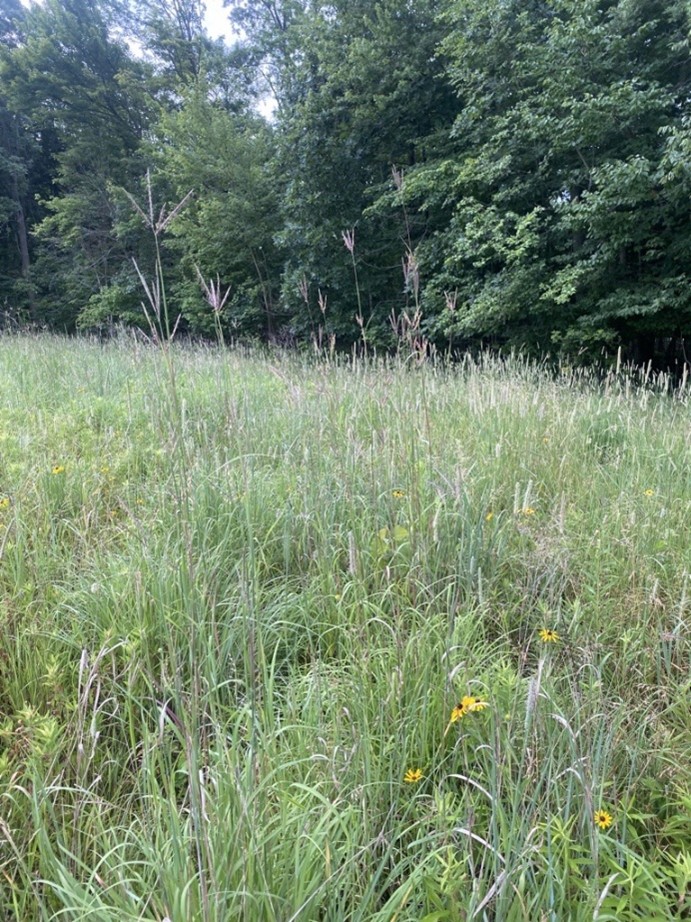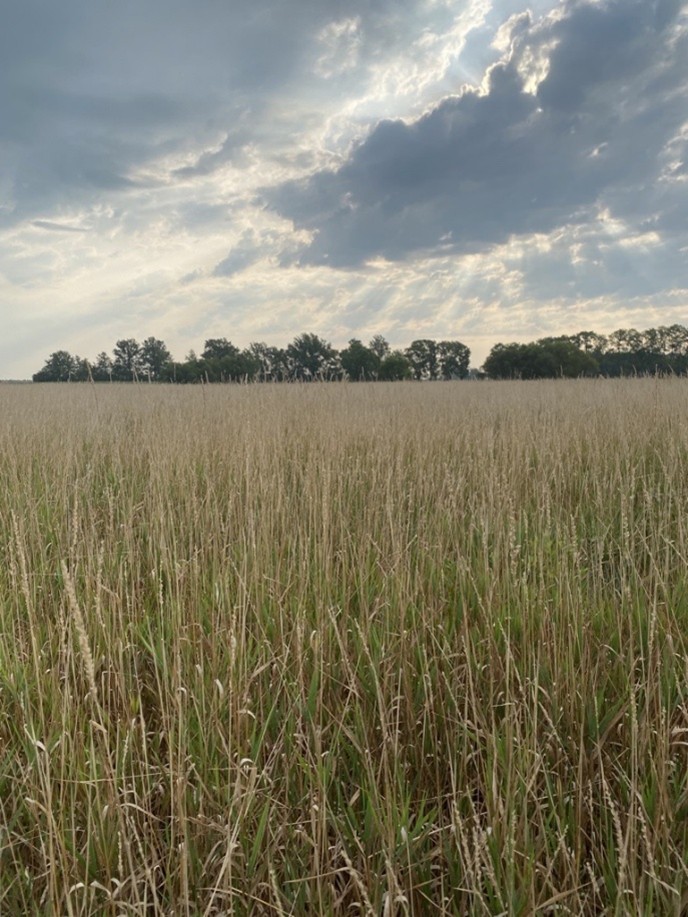A thoughtfully considered prairie planting is one of the most beautiful sites to see come spring. When you are planning your prairie planting, you want to keep diversity in mind. Diversity in height, bloom time, species, lifecycle, structure and location are key to planning a successful habitat. Native grasses vary from 3 feet to as much as 10 feet tall. Native forbs (or wildflowers) also vary greatly in height but also in bloom time, color, shape and size. I mentioned in my first habitat article that ensuring we have species growing in each bloom time frame is the best way to adequately support wildlife and pollinators.
The early spring bloom window is the most challenging time frame to capture on a prairie planting. Well-behaved, non-native clovers are often included in planting mixes in conjunction with some natives like golden alexander, foxglove beard tongue and some coreopsis species. This window can be supported by planting pollinator/ wildlife friendly trees and shrubs that bloom earlier than herbaceous species, act as boundaries between properties and provide additional cover and forage. Wildlife friendly choices can include American plum, oaks, maples, red osier/ flowering dogwood, spice bush, American hazelnut, crab apple, native willows, pines and more.
The peak summer bloom window is the easiest to hit, as most of our native species bloom from June to August. Some of my favorites are cardinal flower, bee balm, blue vervain and mountain mint, which is also a hit with honeybees (trust me). The late bloom window is dominated by goldenrods and asters, which are essential for supporting migrating or hibernating pollinators and wildlife.
At least three species in each bloom window are encouraged, though more is always better. Species that host native pollinators, like milkweed, should also be included. Plant life cycles are also important to consider. Perennials and biennials will persist through the life span of the prairie planting, but that’s not to say annuals should be left out. Annuals are great to include in mixes, especially during the first growing season as perennials are working on their complex root systems and very little growth happens above ground. Annuals give you something pretty to look at and can re-seed themselves for several years, especially in well managed and maintained stands.
Grassland birds and other wildlife species depend on diverse grasslands. Often the wildflower component is overlooked and only grasses are considered good habitat. Yes, our native grasses and their long seed heads are great forage products for wildlife, and conducive to chick mobility, brood rearing, and nesting. However, forbs are what attract the invertebrates that make up a huge portion of birds’ diets.
It is essential to consider continued management when planning your planting. Prescribed fire is one of the best tools available for maintaining early successional habitat. If you’re planning on utilizing it as a tool in your planting, planning burn breaks is essential. Burn breaks are strips of low-lying vegetation, or bare ground, that maintain moisture, green cover, or a lack of cover through much of the year. Clovers fit the bill perfectly. If burn maintenance is something you want to implement but didn’t plan burn breaks into an already established prairie, repeated tillage can achieve a similar result prior to a burn being implemented.
Site conditions are also important to consider when planning a prairie. Upland sites are some of the best locations for planting prairies, however low land/ wet sites can also be successful. Choosing species that suit drainage, sunlight, and soil properties is essential. What does your surrounding habitat lack? Are there gaps you could fill? Are there enough forbs? Too many grasses? This is where things can be fun and very specific to your site. If you’re considering planting a native prairie on your property, please reach out and we can start planning!



